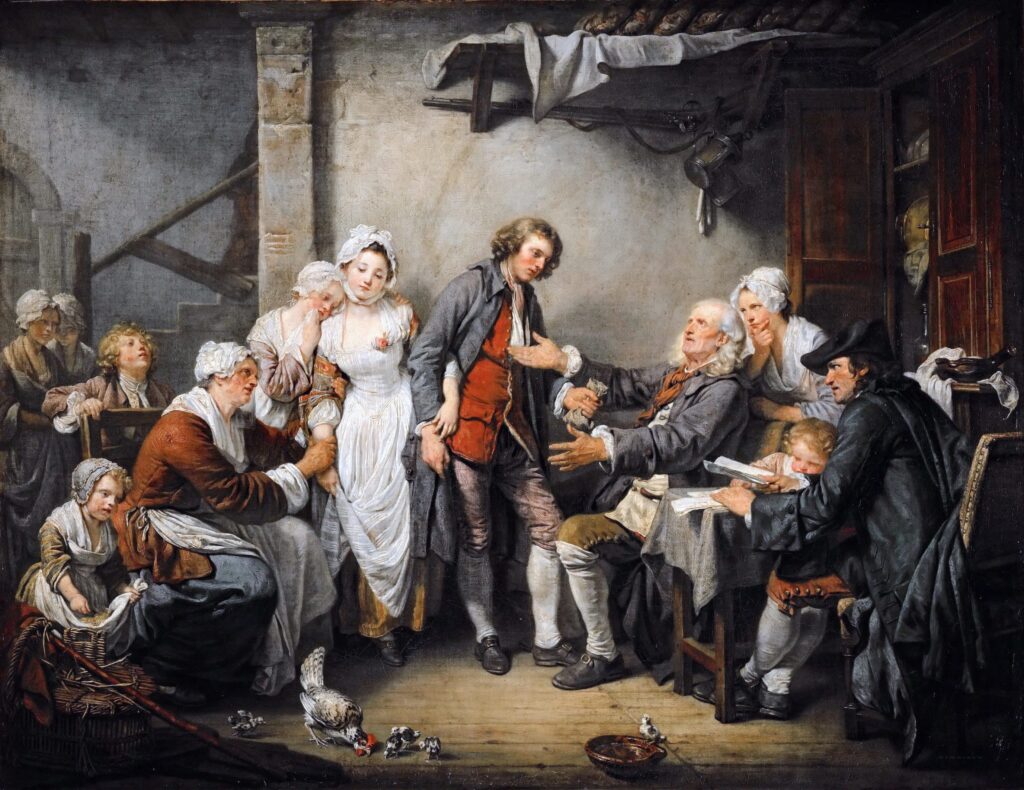Cantata 162 was written during Bach’s Weimar period, in 1716, for the 20th Sunday after Trinity. Part of Bach’s job, after being promoted to Konzertmeister to Duke Wilhelm Ernst of Weimar in 1714, was to write monthly cantatas to be performed in the small chapel of the Duke’s palace. This resulted in most cantatas of this period having reduced forces, and a chamber music quality to them. Bach was also exploring the Italian style, an influence we see as well in his instrumental works of this time.
The piece’s orchestration is simple: strings, basso continuo and 4 vocal soloists. It’s a “solo cantata”, which means that it has no choral movements except for the closing chorale, which in this type of cantata is often performed by the vocal soloists.
Once in Leipzig, Bach often reused his previously composed cantatas, sometimes making minor changes to them, sometimes adapting or repurposing the music more substantially. Cantata 162 was performed again during Bach’s first year in Leipzig, on October 10th, 1723, for which occasion he added a “corno da tirarsi” to the first and last movements.
Its libretto is by Salomo Franck, a Weimar poet and frequent collaborator of Bach. The final chorale is a 1652 hymn by Johann Rosenmüller and Johann Georg Albinus. Franck’s libretto is based on the Gospel for this Sunday (Matthew 22: 1-14), the Parable of the Wedding Banquet. Characteristically, Franck uses strong language and vivid imagery in his poetry, introducing powerful themes of confusion (bass aria), worthiness (tenor recitative), and preparedness for salvation (alto recitative).
The cantata opens with the bass aria, in which Bach illustrates the many contrasting images of the text by creating a walking bass with wide leaps (“as I go to the wedding”), while the strings portray unease with sighing motifs. The horn he added for Leipzig alternates back and forth between the walking pattern of eighth notes and the shorter appoggiaturas, contributing even more to the mood of confusion.
The tenor then gets a “secco” recitative in which the text continues to build on the image of the wedding feast and introduces the figure of a bride (the soul) being wed to Jesus, a metaphor for salvation that appears frequently in the Bible and cantata librettos. The recitative closes with yet another powerful contrast – “How blessed” / “how cursed”, referring to the guests in the Gospel parable.
The soprano aria that follows presents a challenge, as it came down to us with a missing part for an obbligato instrument. Different performers address the problem by attempting reconstructions for various instruments or improvising a right-hand part for the organ. Gardiner’s performance features a duet for flute and oboe, in a beautiful reconstruction by Robert Levin. The aria is the soul’s plead to Jesus, set in a rocking, comforting 12/8 rhythm, which hints at the ultimate salvation even if the text expresses distress.
The next movement is an expressive “secco” recitative for the alto, in which the text elaborates on the last part of the parable: the guest who was condemned for not wearing the appropriate garments. In praying for “the robe of salvation”, the movement delivers the inflexion point that leads to the upbeat duet that follows.
In addition to delivering the reassuring text, the duet also cements the soul/groom metaphor simply by virtue of being a piece for two voices, alto and tenor. Sections of imitative fast passages alternate with homophonic phrases in slower rhythms, illustrating a couple courting each other and lovingly coming together. Long melismas word-paint “delight” (“erfreut”).
The hymn stanza for the closing chorale was carefully chosen, as its first line (“Ach, ich habe schon erblicket”, “Ah, I have already seen”) takes us back to the opening line of the libretto (“Ach! ich sehe”, “Ah, I see”), plus it includes a mention of the “robe of Heaven”.
